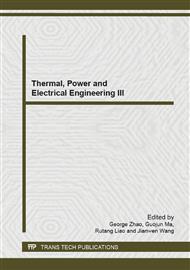p.47
p.52
p.57
p.61
p.65
p.69
p.73
p.78
p.82
Development of SO2 Absorption Materials Having Low Temperature Activity by Base Adducted Complex Method
Abstract:
Sulfur dioxide (SO2) including combustion exhaust gas is must be clarified because of its air pollutant in middle-scale facilities or marine ships. In this study, dry DeSOx filter is developed to capture SO2 within diesel exhaust. CaCO3 is focused on as SO2 absorption material. However, SO2 absorption materials has to be improved low temperature activity below 723 K. To improve the low-temperature desulfurization performance, physically and chemically modified CaCO3 was synthesized using the amorphous citric acid complex method and base adducted complex method. Development of CaCO3 having high specific surface area of 169 m2/g (HSSA CaCO3) by the amorphous citric acid complex method was succeeded. Then, Li or Na doped complex CaCO3 by HSSA CaCO3 was synthesized by base adducted complex method. It is found that these Li-doped complex CaCO3 have higher SO2 absorption performance than conventional CaCO3 and HSSA CaCO3. Its performance is reached 0.31 gSO2/gmaterial at reaction temperature of 723 K by TG experiment, as a comparison, that of conventional CaCO3 is 0.02 gSO2/gmaterial.
Info:
Periodical:
Pages:
65-68
Citation:
Online since:
June 2014
Price:
Сopyright:
© 2014 Trans Tech Publications Ltd. All Rights Reserved
Share:
Citation:


